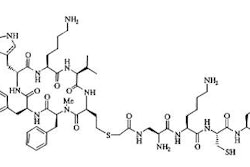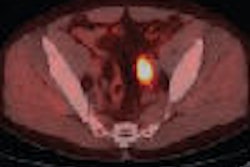KEY LARGO, FL - The great promise of genetic testing and molecular markers may be all the rage right now, but that doesn't mean good old-fashioned imaging and pathology will fall by the wayside. At least that's the opinion of an expert panel at the Breast Course 2007 this week that discussed the role genetic information will play for assessing ductal carcinoma in situ (DCIS).
All five participants -- three radiologists, a pathologist, and a surgeon -- admitted that molecular biology was not their field of expertise. Still, they gamely took on the question: "What role should current genetic and molecular biology profiling play in DCIS evaluation?" Below are some of their thoughts on the matter.
Dr. Michael Lagios, medical director of the Breast Cancer Consultation Service, Tiburon, CA
I'm just a pathologist, but I don't know that there is a role. I know there are a number of efforts to test molecular markers in DCIS to see if you can identify markers that might be useful. I don't know if any currently available technology that is useful.
I do try to keep up on the literature in this area, and I've noticed that there are a lot of retrospective studies looking at the grade of DCIS and molecular markers. You can define differences in DCIS at different grades with molecular markers, but it doesn't seem very useful because the application of molecular markers to DCIS to provide clinical information is going to be very expensive. Under the microscope, relatively cheaply, we can establish a grade for DCIS.
Potentially, we could have molecular markers that would allow us to intervene and establish methods of treatment other than what we have now.
Dr. Steve Harms, professor, department of radiology, University of Arkansas for Medical Sciences, Little Rock
Estrogen receptor (ER) and progesterone receptor (PR) status does just about as good as anything that they've got (in molecular biology). That doesn't mean the future isn't holding something out there, but we're going to have to do some research to figure out what it means.
There's also morphology on MRI. In our series of DCIS, we were able to predict patients that have invasive (disease) completely on the MRI morphology alone. In fact, we also predicted all the microinvasive lesions. We're not seeing the microscopic cells, but we're seeing the morphologic appearance of an aggressive lesion that is reflected on the pathological appearance (Radiology, November 1996, Vol. 201:2, pp. 427-432).
Dr. Philip Israel, director of the Breast Center, Marietta, GA
[On the subject of ER status in DCIS] My question is when DCIS is ER-negative, does this preclude the use of an antiestrogen, such as tamoxifen, either for treatment or for chemoprevention?
I don't think that chemoprevention (studies) distinguish between invasive disease and noninvasive disease. I wonder if we're being too restrictive in ER-negative DCIS…. Should we still use tamoxifen, knowing that we are not going to affect the tumor?
Dr. Philippe Sebag, diagnostic radiologist, Centre de Sénologie, Nice, France
What about the biological signs of p53 or the high expression of Neu/Erb2? I read a paper (in which) molecular markers identified aggressive DCIS compared to less aggressive DCIS, but there's no biological modification. Is that the way of research for the future (if) it doesn't change the way we treat the patient?
Do you think biological features can explain why … there's recurrence? Because of the mutation of genes, do you think that this knowledge could prospectively explain the reason why some patients will have recurrence or invasive disease although they had the correct treatment?
Dr. Thomas Stavros, chief of ultrasound and noninvasive vascular services, Radiology Imaging Associates, Denver
Somebody should be the devil's advocate. I'm going to say that the morphologic patterns on mammogram have more predictive value than any of the biologic markers. In fact, if you see linear branching calcification on mammography, you've got a real bad actor. I think even the old morphology, micropapilloma, indicates a bad actor.
Sometimes we try to hone down too fine, and we need to back off and take a look at the bigger picture.
By Shalmali Pal
AuntMinnie.com staff writer
March 15, 2007
Related Reading
Progesterone blocker prevents breast cancer in mice, November 30, 2006
Genomic instability in normal breast tissue may alter treatment, July 12, 2006
Copyright © 2007 AuntMinnie.com



















